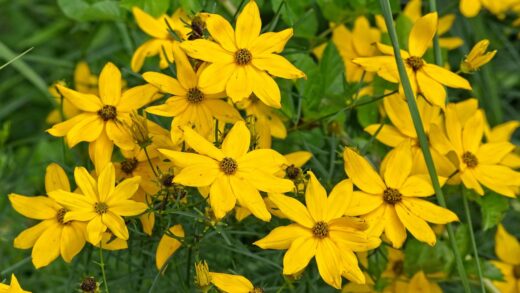The fernleaf peony is a truly spectacular and unique perennial that captivates with its delicate, fern-like foliage and vibrant, usually crimson-red, single or double flowers. Unlike its more common herbaceous cousins, this species boasts a finer texture and an earlier bloom time, making it a prized specimen in any garden setting. Proper care is essential to ensure this rare beauty not only survives but thrives, rewarding you with a stunning display year after year. Understanding its specific needs regarding soil, light, and seasonal attention forms the foundation of successful cultivation, allowing its distinctive charm to fully unfold.
The key to a healthy fernleaf peony begins with selecting an appropriate planting site, as this plant is notoriously resentful of being moved once established. It demands a location that receives ample sunlight, ideally at least six hours of direct sun each day, to promote vigorous growth and prolific flowering. While it can tolerate some very light afternoon shade, particularly in hotter climates, insufficient light will lead to weak stems, sparse foliage, and a disappointing lack of blooms. The chosen spot must also be shielded from strong winds, which can easily damage the delicate stems and foliage.
Exceptional drainage is non-negotiable for the fernleaf peony, as its tuberous roots are highly susceptible to rot in waterlogged conditions. The ideal soil is a rich, fertile loam that is loose and drains freely, yet retains enough moisture to support the plant during its active growth phase in spring. Before planting, it is highly advisable to amend the native soil, especially if you are working with heavy clay or poor, sandy soil. Incorporating generous amounts of well-rotted compost, leaf mold, or other organic matter will vastly improve soil structure, aeration, and nutrient content.
Maintaining consistent moisture levels is particularly crucial during the spring growing season when the plant is developing its foliage and flower buds. However, the goal is to keep the soil evenly moist, not saturated, so you should always check the soil before watering by inserting your finger a few inches deep. Once the plant has finished blooming and the weather turns hotter in the summer, it typically enters a period of dormancy, and its water needs decrease significantly. During this time, you should reduce watering frequency to prevent the risk of root rot, allowing the soil to dry out more between applications.
Understanding the growth cycle
The fernleaf peony exhibits a distinct and relatively short growth cycle compared to other perennials, which is a critical aspect to understand for its proper care. It is one of the very first peonies to emerge in the spring, often pushing its new, reddish shoots through the soil as soon as the ground thaws. This early start means that it completes its flowering period much earlier than other peony varieties, typically in late spring. After this brilliant but brief floral display, the plant’s energy is directed towards developing its root system for the following year.
Following the flowering period, the foliage remains an attractive feature in the garden for several more weeks, providing a soft, feathery texture that contrasts beautifully with broader-leaved plants. However, as summer heat intensifies, the fernleaf peony begins its natural journey into dormancy. The leaves will start to yellow and die back, a process that can be quite rapid. It is essential to recognize this as a normal part of its life cycle and not a sign of disease or distress in the plant.
During its summer dormancy, the plant is essentially resting and gathering resources in its underground tubers for the next spring’s growth. This is the period when the plant is most vulnerable to overwatering, as the inactive roots cannot take up excess moisture, leading to a high risk of rot. Therefore, irrigation should be minimal to nonexistent throughout the late summer and early autumn. Resisting the urge to coddle the plant with water during this time is one of the most important aspects of its long-term care.
As autumn approaches, the foliage will have completely withered away, and the plant will be fully dormant. This is the ideal time for any necessary maintenance, such as division or transplantation, although these activities should be performed infrequently. The plant will remain dormant throughout the winter, relying on the energy stored in its tubers to survive the cold. The cycle begins anew in the early spring, with the promise of fresh growth and another spectacular floral show.
Soil requirements and preparation
Achieving the perfect soil environment is paramount for the long-term health and vitality of the fernleaf peony. This species thrives in a neutral to slightly alkaline soil pH, generally preferring a range between 6.5 and 7.5. It is highly recommended to perform a soil test before planting to determine the existing pH and nutrient levels. If your soil is acidic, you can amend it by incorporating dolomitic lime or wood ash several months before planting to gradually raise the pH to the desired level.
Proper soil structure is just as important as its chemical composition, with the primary goal being to ensure excellent drainage. To prepare a new planting bed for a fernleaf peony, you should cultivate the soil to a depth of at least 30 to 45 centimeters. This deep preparation helps to loosen compacted layers and allows the tuberous roots to expand without obstruction. During this process, you should remove any weeds, rocks, or other debris that could hinder root development.
Incorporating organic matter is the most effective way to improve virtually any soil type for this plant. For heavy clay soils, adding compost, coarse sand, or fine pine bark will improve drainage and aeration, preventing the roots from becoming waterlogged. For sandy soils that drain too quickly, adding compost, peat moss, or well-rotted manure will help to increase its water and nutrient-holding capacity. These amendments should be thoroughly mixed into the entire planting area, not just the planting hole, to encourage roots to spread outwards.
Once the fernleaf peony is established, you should avoid deep cultivation or hoeing around the base of the plant. The feeder roots are quite shallow and can be easily damaged by mechanical disturbance, which can set back the plant’s growth and reduce its flowering potential. Instead, apply a top dressing of compost annually in the early spring to replenish nutrients and maintain good soil structure. This gentle approach helps to sustain the ideal soil environment without risking damage to the delicate root system.
Mulching and weed control
Applying a layer of organic mulch around the base of your fernleaf peony offers numerous benefits throughout the growing season. Mulch is instrumental in suppressing weed growth, which is important as the fernleaf peony does not compete well with aggressive weeds for water and nutrients. A thick layer of mulch blocks sunlight from reaching the soil surface, preventing many weed seeds from germinating. This reduces the need for manual weeding, which, as mentioned, can disturb the plant’s shallow roots.
Beyond weed control, mulch plays a vital role in regulating soil moisture and temperature. A good layer of mulch helps to conserve water in the soil by reducing evaporation from the surface, meaning you will need to water less frequently. It also insulates the soil, keeping the roots cooler during the heat of summer and protecting them from extreme temperature fluctuations. This stable environment reduces stress on the plant and promotes healthier, more robust growth.
When applying mulch, it is crucial to use the correct technique to avoid causing harm to the plant. Spread a 5 to 7-centimeter layer of organic material, such as shredded bark, leaf mold, or pine straw, over the root zone. However, be sure to leave a small, mulch-free circle directly around the crown and stems of the plant. Piling mulch up against the stems can trap excess moisture, creating a perfect environment for fungal diseases and crown rot to develop.
The best time to apply or replenish mulch is in the early spring, just as the new shoots are emerging. This helps to lock in the spring moisture and get ahead of the first flush of weed growth. Over time, the organic mulch will naturally decompose, adding valuable nutrients and humus to the soil. This slow release of nutrients provides a gentle, continuous feeding that benefits the plant throughout its active growth period, further enhancing the soil structure.
Seasonal care considerations
Spring is the most active and critical period in the life of a fernleaf peony, requiring attentive care to ensure a successful season. As the first shoots emerge, you should carefully remove any remaining old foliage from the previous year to improve air circulation and reduce the risk of fungal diseases. This is also the time to apply a balanced, slow-release fertilizer or a top dressing of compost to provide the necessary nutrients for strong foliage and flower development. Monitor moisture levels closely, ensuring the soil remains consistently moist as the plant rapidly grows.
As the plant transitions into summer after its spectacular but brief flowering period, your care routine must adapt to its changing needs. This is when the plant begins to enter its natural dormancy phase, and its water requirements drop dramatically. It is imperative to reduce irrigation significantly to prevent the tuberous roots from rotting in the warm, inactive soil. Allow the foliage to die back naturally, as it is still photosynthesizing and sending energy down to the roots for next year’s growth.
Autumn is the season for planting new fernleaf peonies or, if absolutely necessary, for dividing and transplanting established clumps. If you must move a plant, do so with extreme care, ensuring you dig up as much of the root system as possible. For newly planted peonies, a layer of mulch applied after the first hard frost can help to prevent frost-heaving, which can push the roots out of the ground. For established plants, autumn care is minimal, primarily involving a final cleanup of the garden bed once the foliage has completely withered.
Winter care for the fernleaf peony is relatively straightforward, as it is a very hardy plant once established. In regions with reliable snow cover, no special protection is usually needed, as the snow provides excellent insulation. In colder climates without consistent snow, or for newly planted specimens, applying a loose winter mulch like straw or evergreen boughs after the ground has frozen can offer extra protection. This mulch should be removed promptly in early spring to allow the new shoots to emerge unimpeded.
Monitoring for health and vigor
Regular observation of your fernleaf peony is key to catching any potential issues before they become serious problems. A healthy plant will exhibit vigorous spring growth, with sturdy stems and lush, finely divided foliage that has a deep green color. The flowers should be well-formed and brightly colored, held upright on their stems. Take time to inspect the leaves, stems, and the base of the plant periodically for any signs of distress.
One of the first indicators of a problem is a change in the foliage. Leaves that appear yellowed, spotted, or wilted during the active growing season can signal a range of issues, from nutrient deficiencies and improper watering to the onset of a fungal disease. If you notice such symptoms, you need to investigate the potential causes promptly. For example, yellowing leaves with green veins might indicate an iron deficiency, while brown or black spots could be a sign of botrytis blight.
The overall posture and growth habit of the plant are also important indicators of its health. Weak, spindly stems that struggle to support the flowers can be a sign of insufficient sunlight. If your peony consistently fails to produce blooms, it could be planted too deeply, not receiving enough sun, or it might be too young to flower. A mature, healthy fernleaf peony should form a well-rounded, bushy clump that stands proudly in the garden.
Pay close attention to the plant’s response to your care regimen and be prepared to make adjustments as needed. For instance, if you notice the soil remains soggy long after watering, you may need to improve drainage or adjust your irrigation schedule. If the plant seems to be growing slowly despite ideal conditions, a soil test might reveal a nutrient imbalance that needs correcting. Proactive monitoring and responsive care are the cornerstones of cultivating a thriving, long-lived fernleaf peony.

















